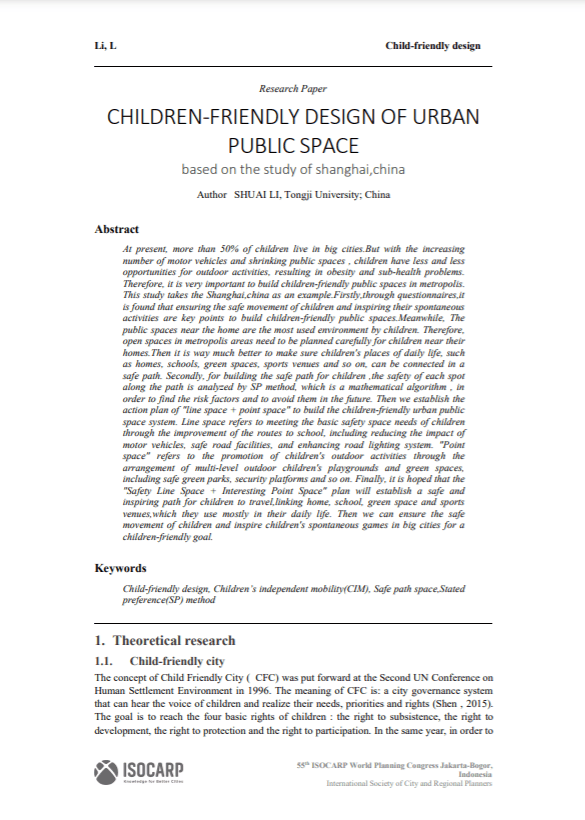Child Friendly design of urban public space: based on the study of shanghai, China
Author(s): ISOCARP
Language: English
At present, more than 50% of children live in big cities. But with the increasing number of motor vehicles and shrinking public spaces , children have less and less opportunities for outdoor activities, resulting in obesity and sub-health problems. Therefore, it is very important to build children-friendly public spaces in metropolis. This study takes the Shanghai, China as an example. Firstly, through questionnaires it is found that ensuring the safe movement of children and inspiring their spontaneous activities are key points to build children-friendly public spaces. Meanwhile, The public spaces near the home are the most used environment by children. Therefore, open spaces in metropolis areas need to be planned carefully for children near their homes. Then it is way much better to make sure children’s places of daily life, such as homes, schools, green spaces, sports venues and so on, can be connected in a safe path. Secondly, for building the safe path for children ,the safety of each spot along the path is analyzed by SP method, which is a mathematical algorithm , in order to find the risk factors and to avoid them in the future. Then we establish the action plan of “line space + point space” to build the children-friendly urban public space system. Line space refers to meeting the basic safety space needs of children through the improvement of the routes to school, including reducing the impact of motor vehicles, safe road facilities, and enhancing road lighting system. “Point space” refers to the promotion of children’s outdoor activities through the arrangement of multi-level outdoor children’s playgrounds and green spaces, including safe green parks, security platforms and so on. Finally, it is hoped that the “Safety Line Space + Interesting Point Space” plan will establish a safe and inspiring path for children to travel linking home, school, green space and sports venues, which they use mostly in their daily life. Then we can ensure the safe movement of children and inspire children’s spontaneous games in big cities for a children-friendly goal

